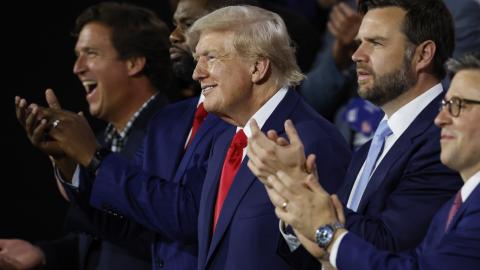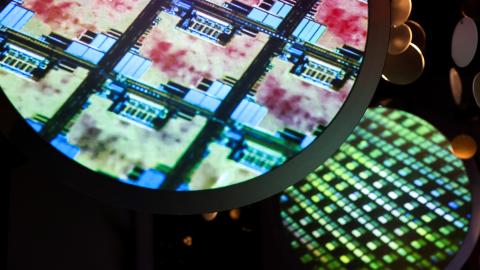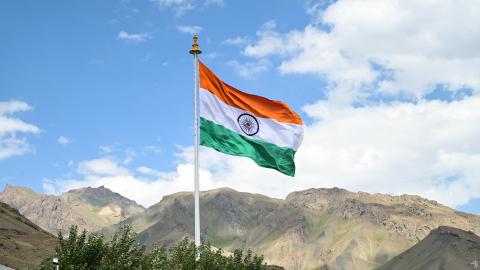The key foreign relationships for American presidents have historically been with democratic allies in Europe, the Middle East and East Asia. But there is one nation that is not a formal security ally but can become a natural partner for U.S. national security and economic interests: India.
In fact, how America approaches its relations with India — the world’s largest democracy, its most populous nation and very soon its third-largest economy — may determine the balance of global power for the 21st century.
Since the end of World War II, American grand strategy has focused on building a network of global alliances that will halt the rise of a peer competitor. As the U.S. looks for a strong strategic partner to contain China’s current hegemonic ambitions, India stands out as the one country whose economic might, military potential and political values can decisively shift the balance of power toward the U.S. and other democracies around the world.
Over 17 percent of the world’s population lives in India. India is poised to become the world’s third-largest economy by 2030 (its GDP stands at $3.94 trillion and is expected to hit $10 trillion by 2035). Its economic growth has stayed around 7 percent per year for the last decade, and it promises to remain robust in the future.
India also has a vast labor force of 594 million that is projected to hit around 1 billion by 2030, with a youthful median age of 28 that promises decades of labor productivity. India’s human capital has already acquired a global reputation, especially in the high-tech sector, while India’s educational institutions produce 1.5 million engineers annually. That’s more than China with its 1.38 million graduates per year (while the U.S. produces 197,000 annually).
As of April 2024, India had over 127,000 recognized startups with over 107 “unicorns” — i.e. startups valued above $1 billion. India’s IT industry is likely to hit the $350 billion mark by 2026 and contribute 10 percent towards GDP. India has over 450 million smartphone users, one of the reasons why the Indian government has pushed projects like digital public infrastructure as a means to address socio-economic disparities and provide access to basic facilities to millions.
India — the fourth-largest military in the world after the U.S., China and Russia — has been steadily modernizing its armed forces, including deploying an impressive nuclear arsenal and missile defense system. Its two aircraft carriers and two nuclear-powered ballistic missile submarines give the Indian navy a blue-water capability that would make it a valuable ally in defending a “free and open” Indo-Pacific.
India would also make an impressive ally in space, with its 124 active satellites circling the globe. In fact, India is one of only four countries to make a successful moon landing, on a budget of just $74 million, smaller than many Hollywood movies.
As for cultural affinities with the U.S. and the West, it’s important to remember that India is the largest English-speaking nation in the world. It’s a vocal supporter of the global norms and multilateral trade institutions such as GATT and the WTO, which sustain a liberal global order. While seeing itself as a future major power — even superpower — India is positioned as the voice of equity in international bodies, demanding that more powerful nations voluntarily cede some of their influence for the sake of greater fairness in world affairs.
India and the U.S. share a similar vision of global security and multilateral architecture, even though they have different views based on their geography and history. For example, while the U.S. sees Russia as a tangible threat to its Atlantic alliance, India views Russia as a key geopolitical counterweight to China.
For the partnership to really deepen, however, there are important steps both sides must take.
First, India needs to open up its still relatively closed economy, a legacy from its socialist past. It needs to undertake the next generation of market reforms, bolster manufacturing, continue to build up its infrastructure and invest even more in its human capital. India also needs to increase its defense spending from the current 1.6 percent to 2.5 to 3 percent, and diversify its suppliers to include more important ones from Western countries, including the U.S.
Second, the U.S. would benefit from American companies treating the Indian market as their alternative to China in the civilian manufacturing, high-tech and defense-industrial spheres. We also need to respect the fact that as a post-colonial country with a world-class economy, and one with a 5,000-year-old civilization, India will always see itself as a global power, not as a junior American ally, with strategic interests separate from — albeit largely aligned with — those of the U.S.
The emergence of India as a global power will permanently alter the dynamic of competition between the U.S. and China. A president who can correctly guide a closer strategic partnership between India and America will not only counterbalance China’s global ambitions and economic and military might, but could trigger a new era of growth and prosperity for both countries — indeed, for all three.
Enjoyed this article? Subscribe to Hudson’s newsletters to stay up to date with our latest content.





















